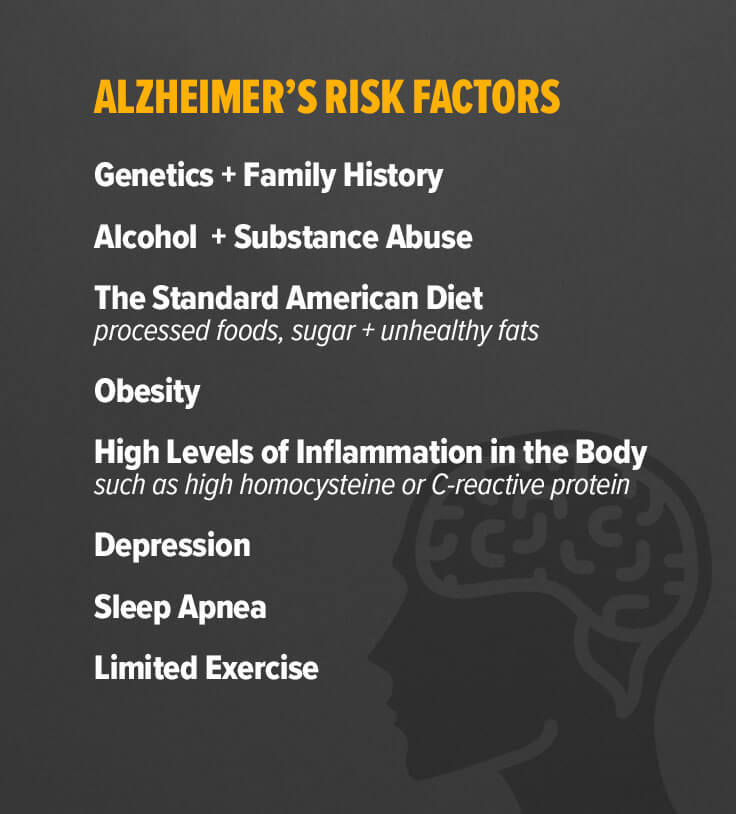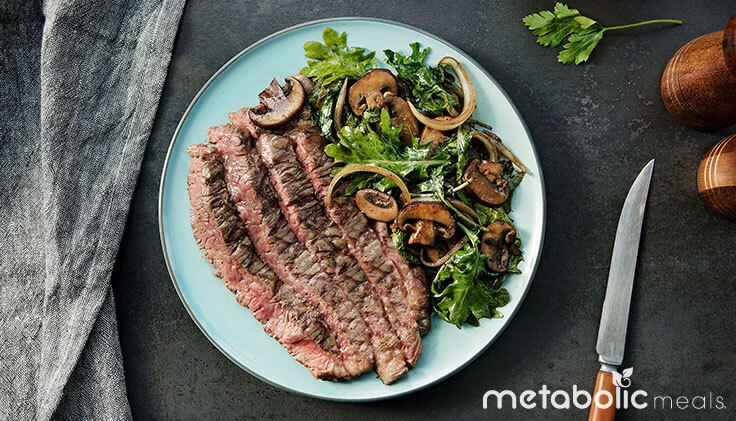ARTICLE AT A GLANCE
• 5.8 million Americans are living with Alzheimer’s. By 2050, this number is projected to rise to nearly 14 million.
• 1 in 3 seniors dies with Alzheimer’s or another dementia. It kills more than breast cancer and prostate cancer combined.
• Research is now strongly indicating that low blood flow may be the number one predictor of Alzheimer’s.
Alzheimer’s is a degenerative brain disease that causes cognitive impairment, personality changes and memory loss.
A number of risk factors have been linked to this devastating condition:

There is good news; most of these risks can be addressed by changing diet and lifestyle. Even gene expression is affected by nutrition, exercise and environmental factors which means that family history of a disease can stop with you.
What is the connection with low blood flow?
Biomedical engineers at Cornell University, Chris Schaefer and Nozomi Nishimura are discovering that decreased blood flow to the brain may be the main culprit behind Alzheimer’s Disease. Their research indicates in these cases that white blood cells stick to the inside of capillaries which leads to blockages downstream magnifying the impact on overall brain flow.
After a decade of research, Schaefer said, “What we’ve done is identify the cellular mechanism that causes reduced brain blood flow in Alzheimer’s disease models (white blood cells) sticking to the capillaries and we’ve shown that when we block the cellular mechanism, we get improved blood flow and the immediate restoration of cognitive performance for spatial and working-memory tasks.”
Daniel Amen MD, founder of Amen Clinics, is a pioneer of brain SPECT imaging and also believes that low blood flow is the number 1 predictor of Alzheimer’s disease as confirmed by over 64,000 brain scans. According to Dr. Amen, “Blood flow to the brain brings nutrients and removes toxins. Research says that brain cells don’t age, rather it’s your blood vessels that age. Anything that damages them, damages your hippocampus and starves you brain of the nutrients it needs.”
How do we increase blood flow to the brain?
1. Eat 25g of animal protein per meal, but make sure it’s high quality
Protein is a vital brain food. For instance, the omega-3 fat DHA, carnosine, creatine, and vitamin B12 are all nutrients that are only available from animal protein and are indispensable brain nutrients that can’t be attained from plants.

Convenient high-quality protein: chef-prepared Grilled Grass-Fed Top Steaks
Amino acids in protein provide the building blocks for production of dopamine and acetylcholine that prevent depression. In addition, animal protein provides taurine, which is an inhibitory amino acid that reduces anxiety and promotes a sense of calm.
It’s important to consider grass-fed, pasture-raised and wild-caught proteins as they have a better ratio of omega 3:6 which helps lower brain inflammation.
2. Eat your leafy greens
Green vegetables are a great source of magnesium which is one of the most common nutrient deficiencies in the American diet.
Research from MIT has shown that magnesium regulates a key receptor in the brain that supports memory and learning. Adequate magnesium content in the cerebrospinal fluid is essential for maintaining the plasticity of synapses. Further, magnesium is necessary for the proper activity of many enzymes within brain cells that control cellular and memory functions.

Grilled Grass-Fed Flank Steak with Balsamic Glazed Mushrooms and Kale
Chef-crafted meals optimized for health benefits.
Leafy greens are also rich in prebiotics, which nourish the cells that line the gut and have been associated with reducing the risk for certain types of cancer, including colorectal cancer. Because prebiotics enter the bloodstream and travel to other organs, they can act as signals to communicate with the brain as well as regulate the immune system and inflammation in the body.
3. Eat less sugar
Researchers are finding clues that Alzheimer’s disease could be a form of diabetes because of the disease’s molecular and biochemical characteristics. Research has shown that insulin resistance, cell loss, amyloid protein deposits, chronic oxidative stress, DNA damage, and other factors of Alzheimer’s mirror the characteristics of diabetes but within the brain.
We now know that people who have diabetes are typically at higher risk of developing Alzheimer’s. We also know that people with diabetes usually have poor blood circulation.

0g added sugar: Chili Cheese Chicken with Cilantro Lime Brussels Sprouts
4. Balance your fats
The typical American diet contains up to 20x too much inflammatory omega-6 fatty acids from canola, cottonseed, and corn oils as well as commercially farmed meats raised on grain and soy. Major health benefits can come from improving your omega 3:6:9 ratio which means that more of your fat consumption should be coming from grass-fed beef, free-range eggs, wild-caught fish, extra virgin olive, avocados, nuts and seeds.
Saturated fat also has its place in a healthy diet, but most people should consider staying under 25g per day.

Szechuan Wild-Caught Shrimp with Cauliflower Fried Rice
5. Limit coffee and consider green tea
Coffee has a number of benefits, but in high amounts may reduce blood flow to the brain. After 1-2 morning cups, consider switching to green tea. EGCg (epigallocatechin gallate) is a key active component of green tea leaves that is valued for its antioxidant properties which helps fight brain oxidation. Green tea has also been studied extensively for weight loss through the promotion of fat metabolism.

6. Exercise often
After fixing your diet, the key to becoming a “super ager” is exercising vigorously and often. Strength training, interval cardio and steady-state cardio above 60% max heart rate have all been shown to raise BDNF (brain drive neurotrophic factor) which maintains brain mass and can even grow new brain cells. This is important because it’s possible to start losing brain mass as early as your 20’s and the elderly often have a reduced brain mass of 20% or more.

7. Reduce alcohol intake
People who drink just 1-7 drinks per week have smaller brains than nondrinkers, according to a 2008 study at John Hopkins. The brain scans of heavy drinkers showed reduced blood flow to the brain and shrinking of the hippocampus.
Compared with nondrinkers and light drinkers, moderate to heavy drinkers have a 57% higher risk of dementia.
8. Sweat it out in the sauna

Sauna use has been shown to be very protective against developing Alzheimer’s Disease. One of the biggest benefits is from the detoxification of mercury, BPA, and cadmium. Heat exposure also raises norepinephrine up to 300% which enhances focus and attention. Results can be seen with temperatures above 140 degrees Fahrenheit for 20 minutes, 2 times per week. Make sure that your heart is healthy enough for sauna use before attempting this strategy.
The importance of starting early
As stated, brain shrinkage can start in our 20’s and poor dietary and lifestyle habits speed the process up significantly as we get older. Fast forward to your 40’s and 50’s where studies indicate individuals with overall brain shrinkage start displaying more aggressive symptoms of aging, including memory loss, decrease in mental sharpness, cardiovascular disease, obesity, diabetes, and poor sleep quality.
Even though brain shrinkage is progressive, a growing number of neuroscientists believe that it can be slowed or even reversed with lifestyle modification. Making the conscious decisions daily to pick foods and activities that nourish your brain is an investment you will never regret.






